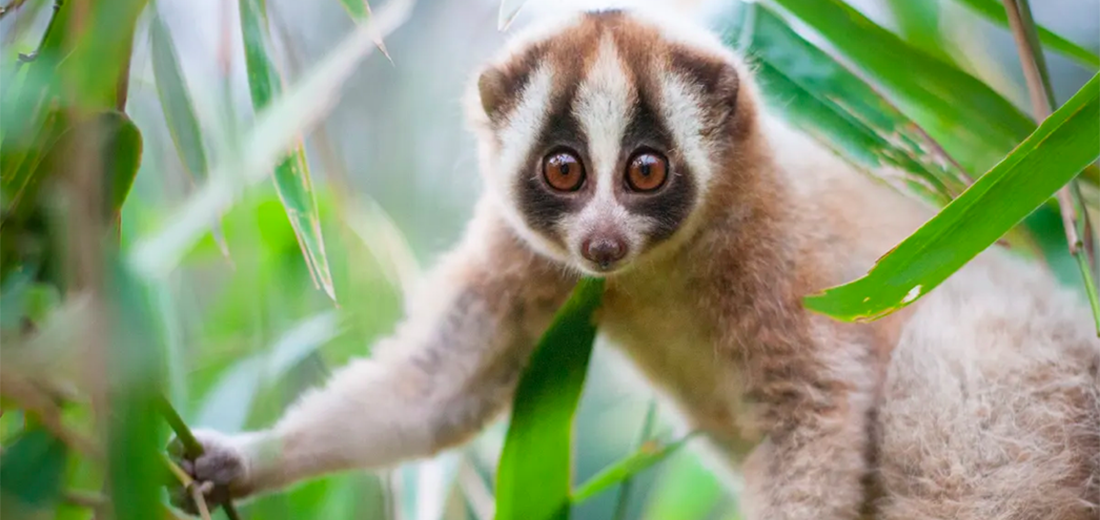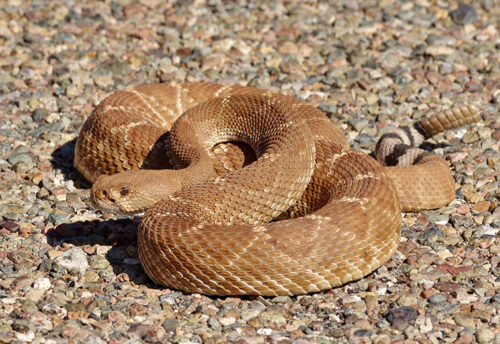
The loris is a species of tree dwelling primate residing in tropical rainforests, semi-deciduous forests, scrub forests, swamps, and even suburban gardens of Southeast Asia, India, and Sri Lanka. These beautiful, slow-moving primates are the only known primate that is both poisonous and venomous. Their careful movements mimic that of the sloth; just not as slow. They also move via quadrupedal locomotion (walking on all fours). Sadly, most of the subspecies of loris are listed as Vulnerable or Endangered by the IUCN, due to habitat destruction, hunting, and collection for the pet trade. Never purchase a loris as a pet. They have very specific needs and most often fail to thrive in captivity, resulting in a prolonged, painful death. And contrary to belief, they do not like being tickled!
First the Stats…
Scientific name: Nycticebus
Weight: Up to 2.5 lbs.
Length: Up to 13 inches, plus their tail
Lifespan: Up to 20 years
Now on to the Facts!
1.) As you can tell by their massive eyes, the largest of all the primates, in relation to their head, these critters are nocturnal (active at night).
2.) With their forward facing eyes, they are provided with not only binocular vision, but they also have a special membrane in their eyes called a tapetum lucidum which allows them to see in almost total darkness.
3.) They are omnivores (eat both plant an animal matter), eating fruit, small animals, tree gum, and other vegetation.
4.) Their closest relatives are the African bushbabies.
5.) Lorises have 2 tongues! A rough “under tongue”, which is used to clean their teeth, and a longer tongue that is used to drink liquid nectar from flowers.
But wait, there’s more on the loris!
6.) Besides their huge eyes, they also have an excellent sense of smell.
7.) The loris has a very strong grip which allows them to hang from a tree branch for hours at a time!
Did you know…?
Lorises are the only known venomous and poisonous primate. Their toxin comes from the brachial glands on their elbows. For self defense, they will lick their elbows, which distributes the poison to their teeth to deliver a painful bite. They will also groom their young with this poison to help protect them from predators. The venom/poison is similar to that of cat allergens.
8.) In certain parts of Asia, the slow loris is believed to have the ability to cure over 100 diseases. This has never been proven and is one reason they are endangered.
9.) Snakes, hawk-eagles, and orangutans all prey on the loris.
10.) Females produce 1 infant each time she breeds.
Now a Short Loris Video!
Also, check out the Critter Science YouTube channel. Videos added frequently!
Want to suggest a critter for me to write about? Let me know here.



